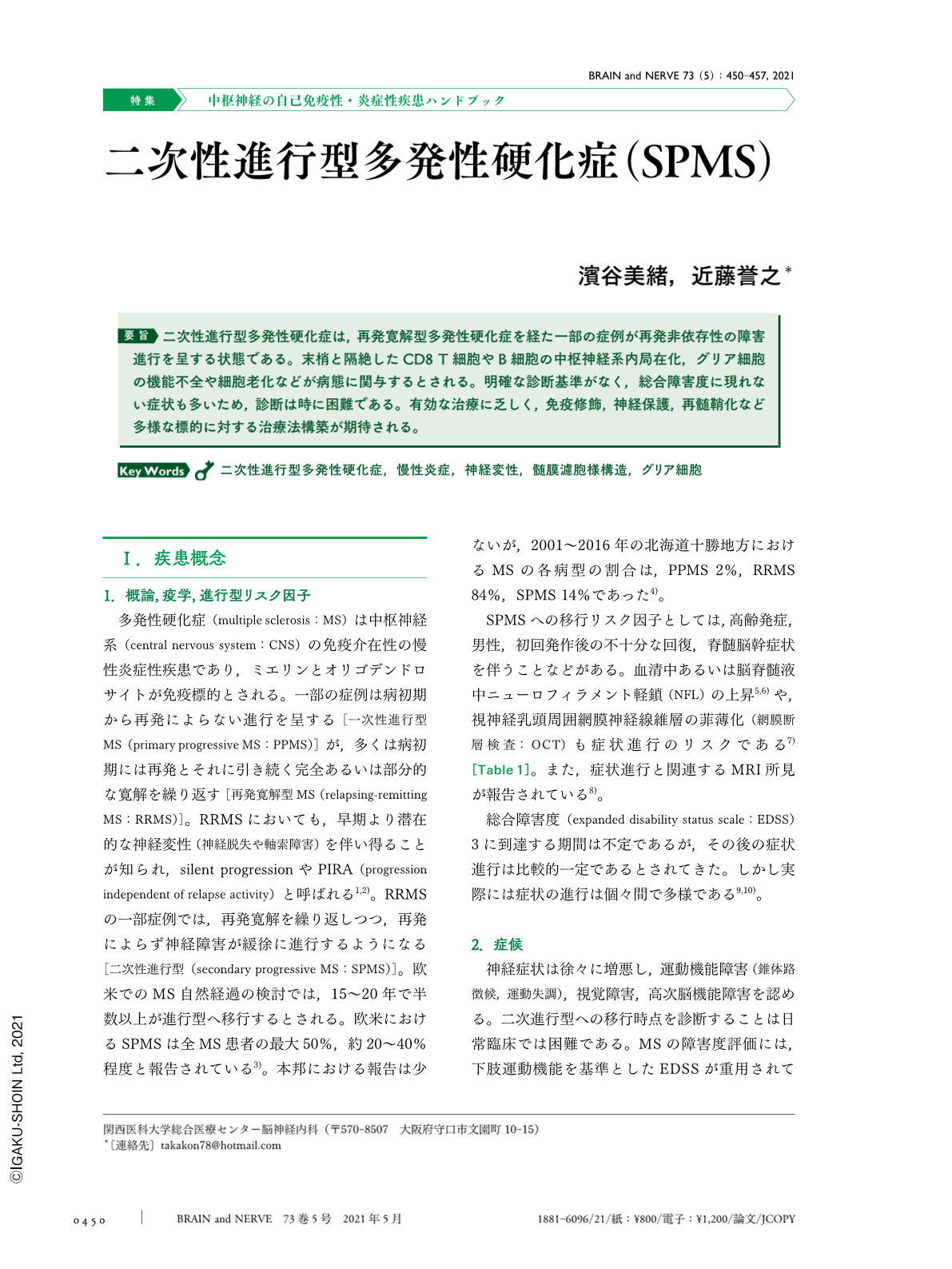Japanese
English
- 有料閲覧
- Abstract 文献概要
- 1ページ目 Look Inside
- 参考文献 Reference
二次性進行型多発性硬化症は,再発寛解型多発性硬化症を経た一部の症例が再発非依存性の障害進行を呈する状態である。末梢と隔絶したCD8 T細胞やB細胞の中枢神経系内局在化,グリア細胞の機能不全や細胞老化などが病態に関与するとされる。明確な診断基準がなく,総合障害度に現れない症状も多いため,診断は時に困難である。有効な治療に乏しく,免疫修飾,神経保護,再髄鞘化など多様な標的に対する治療法構築が期待される。
Abstract
Secondary progressive multiple sclerosis (SPMS) is defined by the slowly progressive deterioration of clinical symptoms independent of relapse, following the early relapsing-remitting disease course. Diagnosis of SPMS is challenging and usually retrospective because of the lack of reliable diagnostic tests. There is also a lack of reliable clinical symptoms other than gait disturbance, which are well evaluated in the clinical setting. The pathogenic mechanisms driving SPMS are poorly understood, and therapy for SPMS remains limited. It is assumed that the characteristic features of neurodegeneration observed in SPMS are caused by chronic inflammation with compartmentalized T and B cells from the periphery, glial and mitochondrial dysfunction, and other factors. Neuroprotective agents, promotion of remyelination, and immunological modifications may be key targets for novel treatment strategies.

Copyright © 2021, Igaku-Shoin Ltd. All rights reserved.


